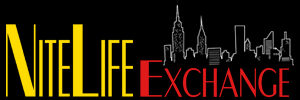
When in comes to technical excellence in live performance, Matt Berman is a go-to in theater, cabaret and concert stages. Among career highlights, of which there are many, he is the resident lighting designer for Lincoln Center’s American Songbook. He has also designed the lighting for Kristin Chenoweth’s For The Girls at the Nederlander Theatre as well as her show My Love Letter To Broadway at the Lunt-Fontanne. Berman is not only Chenoweth’s preferred designer, but also that of Liza Minnelli, Alan Cumming, Meow Meow, Brian Stokes Mitchell and Elaine Paige, among others. Internationally, he’s worked at the Royal Albert Hall, The Paris Opera, The Olympia Theater in Paris, Carre Theater in Amsterdam, The Sporting Club in Monte Carlo, The Acropolis, The Amphitheater in Taormina Sicily, Luna Park in Buenos Aires and the Sydney Opera House to name a few. As if all of these astounding credits weren’t enough, the list of performers Berman has worked with also includes Bernadette Peters, Barbra Streisand, Reba McEntire, Melissa Erico, Deborah Voigt, Michael Urie, Stevie Wonder, India Arie, Garth Brooks, Billy Joel and Sting.
NiteLife Exchange (NLE) asks Matt Berman (MB) Six Questions:
NLE: Can you tell us a little bit about your background and how you got into show business?
MB: I studied theatre in college and when I moved back to NYC, I got my first lighting/sound job at the old Duplex on Grove Street. That’s where I started to focus in on the idea of working with concerts and solo/group musical performances.
NLE: What attracted you to sound and lighting design?
MB: I went in to school thinking that I wanted to be an actor. But I did a lot of tech work at the same time. At a certain point I had that “ah ha!” moment when I realized that I was much more at home behind the lighting and sound consoles than I felt onstage. Acting really felt like work, whereas the technical side came very naturally to me. I just needed to study how to make it all work.
NLE: You’ve also been a stage manager; what was that experience like?
MB: Because of my training in the cabarets, stage management was a logical extension to me. I had studied it in school as part of the technical theatre program, but it was really by working with performers that I realized how much I enjoyed organizing and running the rehearsal/show world for them. I actually got my Equity card on a production of a show that I had started working on at the old Eighty Eights.
NLE: What’s your favorite medium to work in, i.e. stage, cabaret, concert hall?
MB: I love all forms. I’ve done quite a few plays, which I’ve loved immensely, but I think that my strength lies in musical performances. To me, the concert work that I do is all the same. It’s just a matter of the size of the audience that makes the difference. All of my work in concert halls and large theaters has the same feel as a cabaret. The artists that I work with are all exceptionally connected with and generous to their audiences. So in that sense, it’s just the same as an 80-seat cabaret.
NLE: Do you think virtual programming is here to stay, even when we’re back to “normal?”
MB: I believe that virtual programming is here to stay. We’ve discovered the possibility of reaching a much larger audience, which is so enticing. It will morph quite a bit once live theater/concerts begin again, but I believe that the streaming of shows and concerts will become a new way to reach new audiences, as well as a new revenue stream for performers/producers.
NLE: What’s your best advice for people creating streaming video?
MB: Naturally I go straight to your lighting and sound first. When someone clicks on your stream, they will evaluate your commitment to what you’re doing. Whether or not that’s fair to do—it’s how it is. It’s also a psychological “tell” to the audience as to how relaxed they can be. If they don’t have to worry about your tech, they’ll relax and pay more attention to you.
For lighting, make sure you look nice and even, not grainy—and don’t have a lot of backlight behind you (from windows or another room), so that your camera doesn’t focus to that rather than you.
For sound, try and use any mic other than the one that’s on your computer. As everyone has noticed, although functional they have a lot of air and space around them that creates a hollow sound. Again, it’s the perception of whether you care enough about your audience to take the time and give them a good sounding show.







Leave a Reply